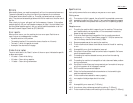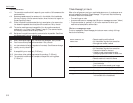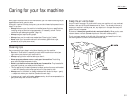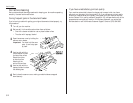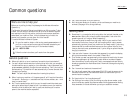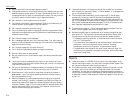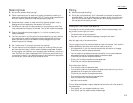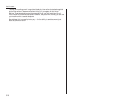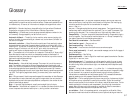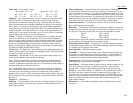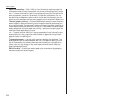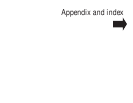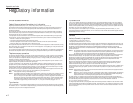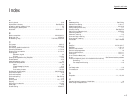
Just in case …
This glossary contains terms and words you may encounter when discussing or
reading about fax machines and fax communications. Please use these definitions
for reference only. Of course, all information is subject to change without notice.
A4, B4, A3 — Standard stationery sizes defined by the International Standards
Organization, an agency of the United Nations. See also Paper sizes.
Autodialing — Enables user to store preprogrammed telephone numbers in the
unit’s memory. Storage capability varies from unit to unit.
Automatic fallback — The ability of a fax machine, when communicating with
another fax which is communicating at a slower rate, to slow down (“fall back”) to
the other unit’s speed.
Automatic reduction — Many Muratec fax machines will automatically reduce
documents being transmitted to accommodate the effective printing width of the
receiving unit. This allows, for example, a fax machine with a 10″ scanning width to
send an image 10″ wide to a unit with an 8.5″ print width; the receiving fax
machine will receive a reduced-size printout of the complete image.
Bit — The smallest unit of information in a computer. Contraction of “binary digit.”
Some Muratec fax machines, which are themselves computers “dedicated” to
telecommunications, allow users to change bits of information to provide or cancel
features through software settings.
Bits per second — See bps.
Black density — Also called black coverage. The amount of non-white area on a
page. For example, most regular office correspondence has a black density well
under 10%, due to the presence of margins, spaces between words, spaces between
lines and paragraphs and even spaces within letters (such as e and o). However,
drawings and photographs have a much higher black density, sometimes approach-
ing 100%. The higher a page’s black density, the more slowly a fax machine can
send it.
bps — Bits per second. Used to express the speed of transmission of data. Because
fax transmission treats a document as a graphic image rather than as a series of
alphabetic and numeric characters, bps does not correspond to the number of char-
acters transmitted per second.
Byte — A group of digital elements, usually sent as eight bits to the byte.
Call reserve — Also called call request. An
ITU
-
T
standard fax feature which allows
a user to request voice communication prior to, during or after transmission.
Call-waiting service — An optional telephone company service that identifies
when another party is calling while one is already on the phone. Call-waiting sig-
nals often cause interruption of fax transmission or reception.
CCITT
— See
ITU
-
T
.
CCD
,
CIS
— Charged coupled device, contact image sensor. Two types of scanning
mechanisms used in some Muratec fax machines. The
CCD
“reads” fluorescent light
bouncing off a document. The
CIS
uses a flat bar of light-emitting diodes (
LED
s).
Compatibility — The term “compatible” describes the ability of separate things to
function together. Your Muratec fax machine features
ITU
-
T
Group 3 compatibility,
the modern standard for worldwide communication.
Confidential transmission — See SecureMail.
Confirmation report — See
RCR
and
TCR
.
Continuous polling — See Polling.
Copy mode — Lets one use a fax machine as a convenience copier.
Cover page (automatic) — A small, user-created message; can be the first page of
every transmission.
Database polling — See Polling.
Data compression — Used in digital fax machines to speed transmission. See also
Digital fax,
MH
and
MSE
,
SMSE
.
Delayed command — Transmission or polling operation set by the user to occur
later, automatically, at a predetermined time. Great for reducing costs by making
fax calls during times, such as late at night or on weekends, when telephone costs
are lowest.
Digital — Using the binary system — i. e., either 0 or 1 — to describe everything,
so that 0 means off and 1 means on; digital fax machines convert the graphic image
of your document into a series of zeros and ones by using the binary system of
transmission to encode black and white occurrences. This increases transmission
speed by passing over white spaces. See also White-line skip.
Digital fax — Unlike analog systems that scan every portion of a document, digital
fax machines survey a document’s overall picture content. Digital fax machines
scan a line and convert the information into a binary code of zeros and ones. The fax
machine takes this information and compresses it, providing high transmission
speeds. Many Muratec units offer proprietary methods for faster transmissions
between Muratec-manufactured units (see also
MSE
,
SMSE
).
DIP
switches — Dual in-line package switch; a two-position on/off switch. Many
Muratec fax machines include
DIP
switches to control optional settings or features.
Glossary
3.17



